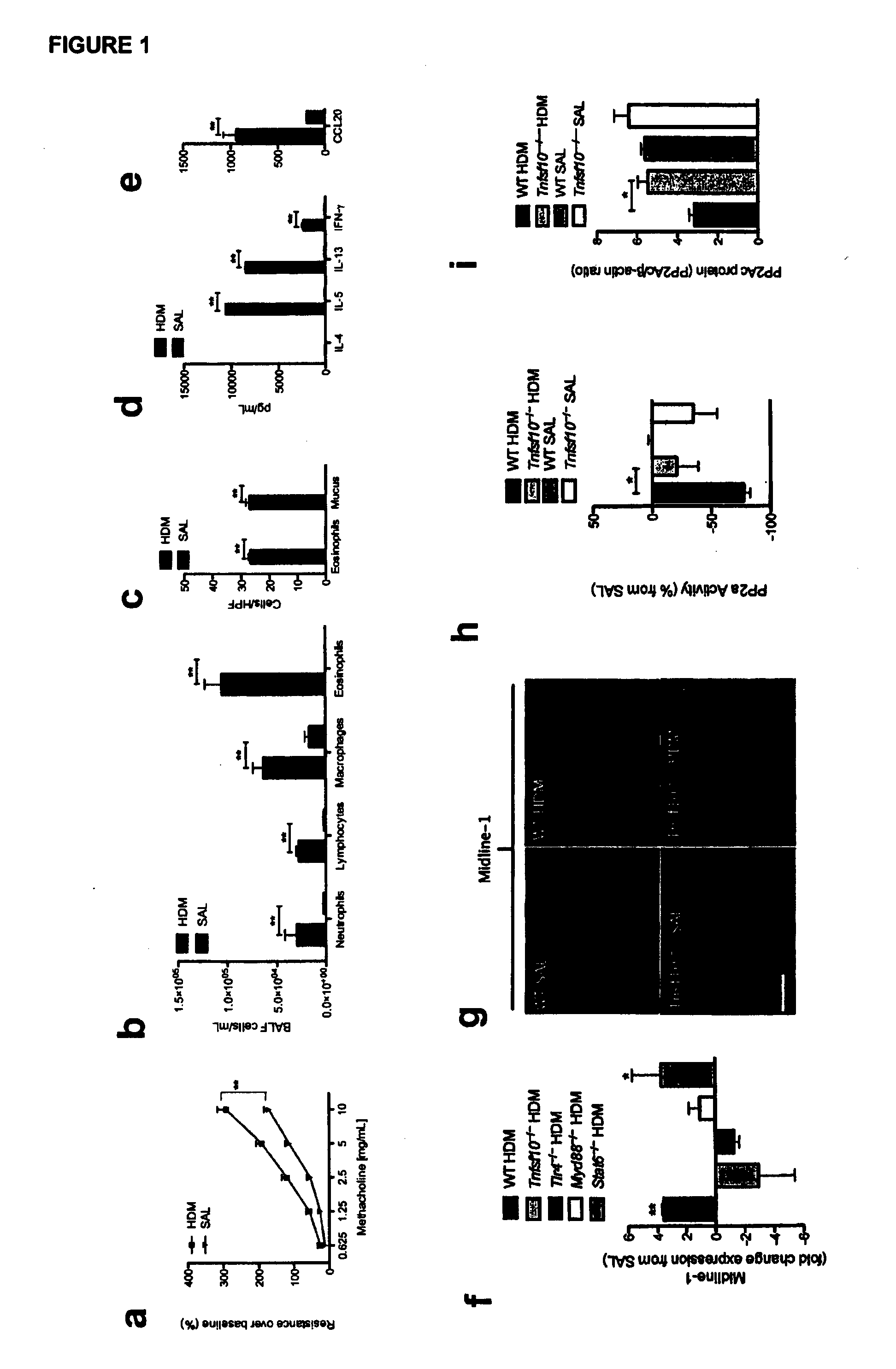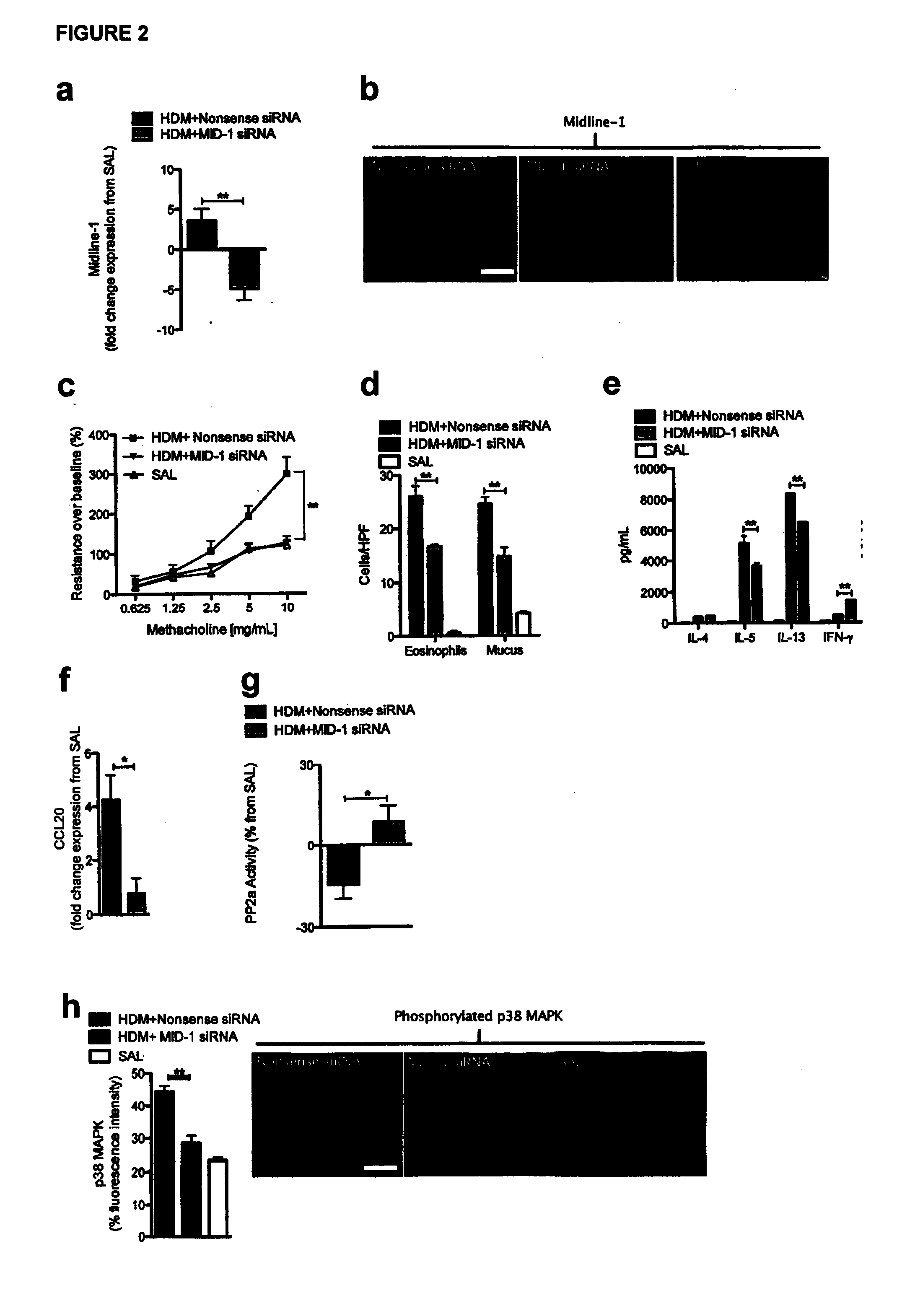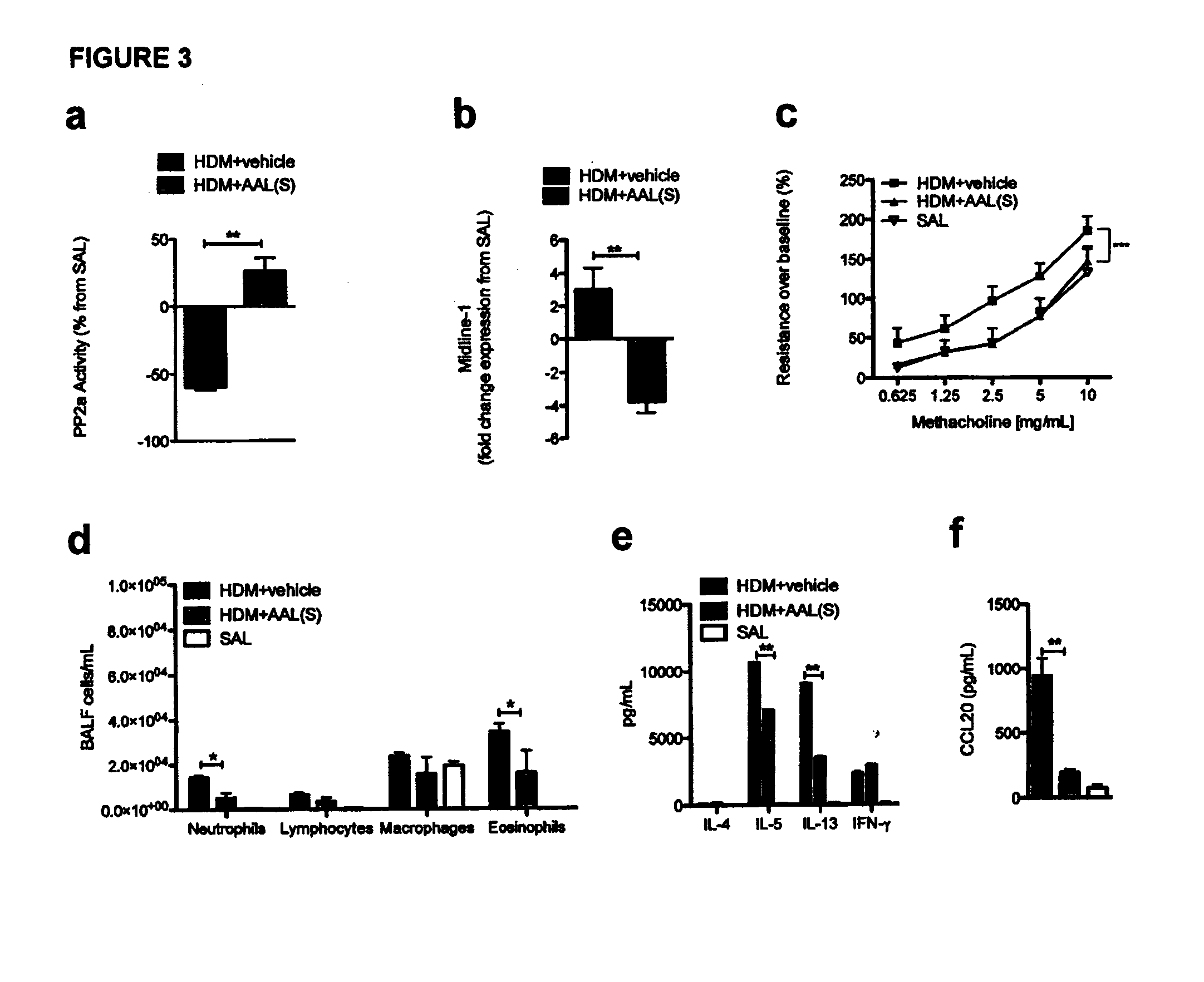Signal transduction pathway modulation
a signal transduction pathway and signal transduction technology, applied in the field of modulating signal transduction pathways, can solve the problems of increasing the tendency to produce excessive airway narrowing (hyperresponsiveness, asthma etiology that remains relatively poorly understood), and the direct and indirect costs of allergic airway diseases on health systems, families, businesses and economies are substantial, and achieve suppressed airway inflammation and mucous production, suppressed airway hyperresponsiveness, and increased expression
- Summary
- Abstract
- Description
- Claims
- Application Information
AI Technical Summary
Benefits of technology
Problems solved by technology
Method used
Image
Examples
example 1
TRAIL Regulates HDM-Induced Allergic Airways Disease, Midline-1 and PP2A Activity
[0153]The present inventors have recently identified Tumor necrosis factor (TNF)-related apoptosis-inducing ligand (TRAIL), which is a member of the TNF superfamily of cytokines, as innate immune signal released by the respiratory epithelium upon allergen exposure (Weckmann et al., 2007). TRAIL was essential for the expression of all hallmark features of ovalbumin-induced allergic airways disease (AAD) by promoting CCL20-mediated recruitment of T cells and dendritic cells in a STAT6-dependent manner.
[0154]A role for TRAIL in TLR4-dependent house dust mite-induced allergic airways disease is demonstrated herein, including airways hyperresponsiveness (FIG. 1a-), inflammatory cell accumulation in bronchoalveolar lavage fluid (FIG. 1b), airways inflammation and mucus production (FIG. 1c), release of Th2 cytokines from in-vitro allergen-stimulated peribronchial lymphnode cells (FIG. 1d), and CCL20 release (F...
example 2
Midline-1 Inhibition Abolishes Airways Hyperreactivity, Reduces Airway Inflammation and Increases PP2a Activity
[0157]To determine the role of Midline-1 in allergic airways disease, expression of Midline-1 was directly inhibited. Specifically, allergic mice were treated with a commercially available (Ambion) in-vitro validated small interfering (si)RNA directed against Midline-1 (SEQ ID NO:3) (MID1 siRNA) or a scrambled nonsense siRNA (control) following previously established protocols. BALB / c mice were anesthetised with isoflurane before being sensitised with the intranasal administration of either 50 μg House Dust Mite antigen (HDM) in 50 μl of sterile saline or 50 μl of sterile saline in control groups. This sensitisation was repeated at days 1 and 2 following initial sensitisation. On day 14 following initial sensitisation the mice were again anesthetised with isoflurane before receiving intranasal challenge with 5 μg of HDM in 500 of sterile water. This challenge dosage was rep...
example 3
PP2A Activation Abolishes Airways Hyperreactivity and Reduces Airway Inflammation and Th2 Cytokine Release
[0159]To confirm a causal relation between PP2A levels in the lung and asthma pathogenesis allergic WT mice were treated with a non-phosphorylatable FTY720 analogue, 2-amino-4-(4-heptyloyphenol)-2-methylbutanol (AAL(S)), that reactivates PP2A in the lungs (FIG. 3a) but does not bind to sphingosine-1-phosphate receptors like FTY720 (Don et al., 2007) because it cannot be phosphorylated by sphingosine kinase 2 (and therefore does not cause lymphopenia). Interestingly PP2A activity was inversely correlated with Midline-1 expression (FIG. 3b). Here evidence is provided for an interaction between PP2A and Midline-1 on a transcriptional or post-transcriptional level. Notably, daily intranasal treatment with AAL(S) during repeated house dust mite challenges to sensitized mice precluded the development of airways hyperresponsiveness (FIG. 3c), airways inflammation (FIG. 3d), and reduced...
PUM
 Login to View More
Login to View More Abstract
Description
Claims
Application Information
 Login to View More
Login to View More - R&D
- Intellectual Property
- Life Sciences
- Materials
- Tech Scout
- Unparalleled Data Quality
- Higher Quality Content
- 60% Fewer Hallucinations
Browse by: Latest US Patents, China's latest patents, Technical Efficacy Thesaurus, Application Domain, Technology Topic, Popular Technical Reports.
© 2025 PatSnap. All rights reserved.Legal|Privacy policy|Modern Slavery Act Transparency Statement|Sitemap|About US| Contact US: help@patsnap.com



